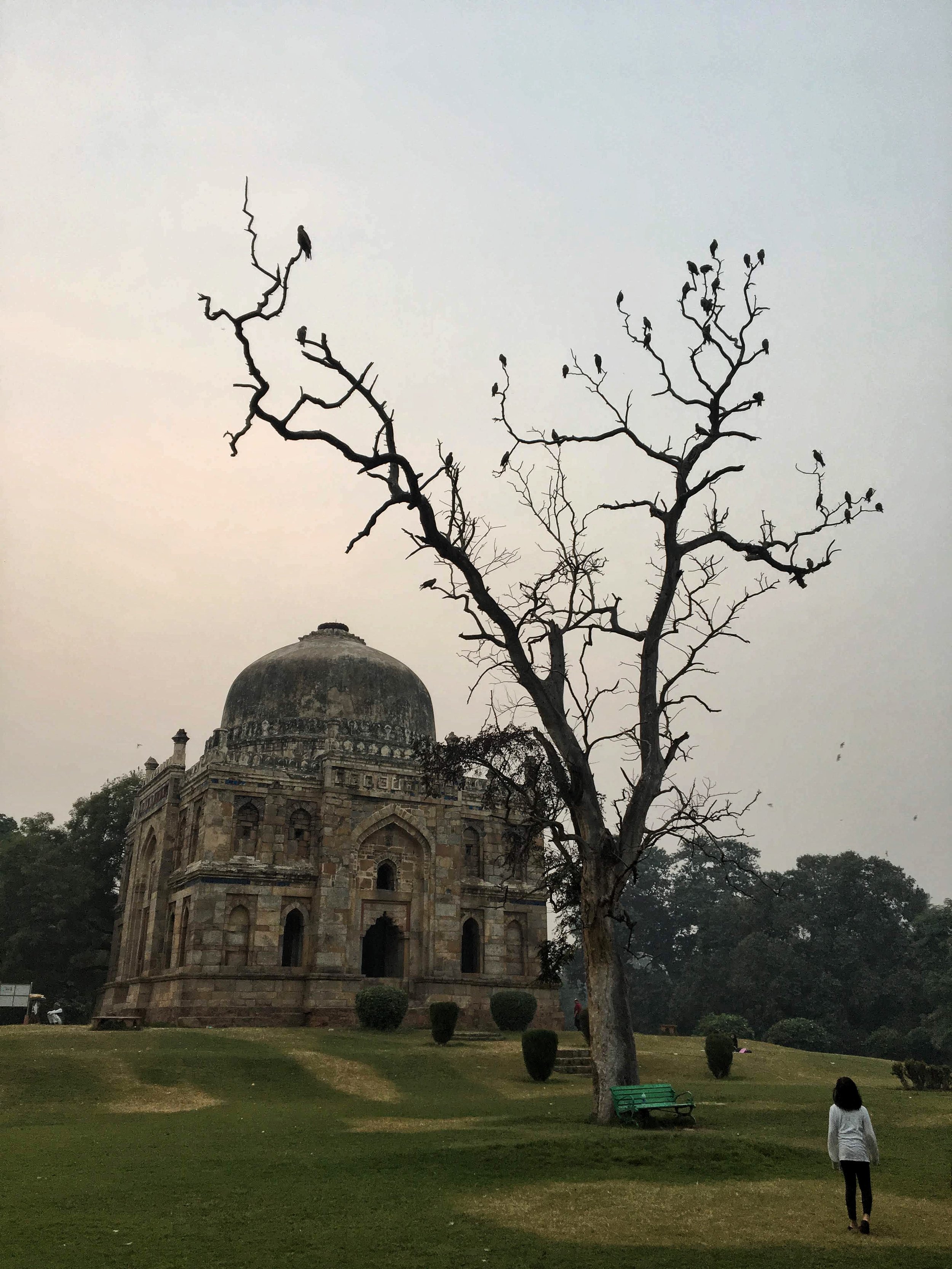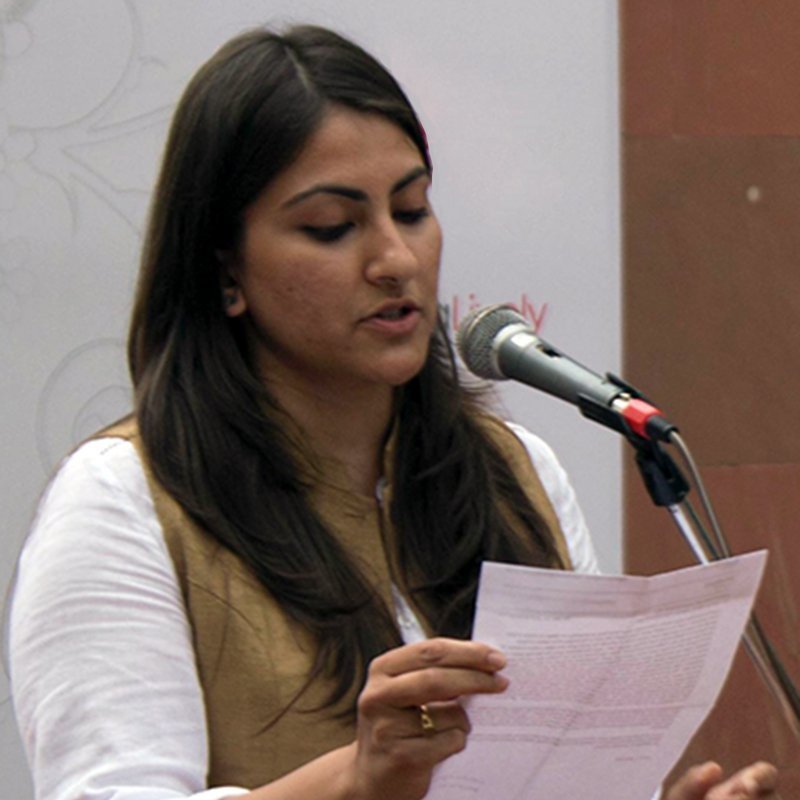Queer Poetry: Engenderings, Endangerings
Aditi Angiras and Akhil Katyal
Note from the Editor: Thinking about ‘queer poetry’, I suggested that the two poets who recently edited The World That Belongs to Us: An Anthology of Queer Poetry from South Asia (HarperCollins India, 2020) create a prefatory ‘frame’ for our mini feature here.
In response, Aditi and Akhil asked each other a couple of questions that they have found impossible to answer by themselves. This is their conversation.
ILLUSTRATION: PAPERLILY STUDIO
Aditi Angiras: Is a queer poem by a queer poet still queer if it is translated by a non-queer person?
Akhil Katyal: Ashwini Sukthankar, in her early 20s then, was putting together a collection of ‘lesbian writing from India’, called Facing the Mirror (1999), she had to get some pieces translated into English from other Indian languages. She arranged for a team to do this job. This is how she briefly described that process: ‘Some pieces were translated … by other lesbian- and bisexual-identified women, of course: a translator has to be wholly faithful to her author’s tongue, the nuance and the music of it, and we could not expect such fidelity from someone with a different erotic awareness’ (italics mine).
I have always wondered about the confidence of Sukthankar’s ‘of course’, having inhabited other of-courses of my own. Who can translate a ‘queer poem’? With whom lies such wherewithal? Who cannot do it? When we call something a ‘queer poem’, what is the final clincher for us in making this call? Is it the content and themes of that story, the plot situations and relationships that come about within it, its form? Is it the sexuality as experienced by the specific body of the poet? Or, is it in the political and social world view that the poet brings to the text? Is it all of these, or some unexpected combination of these variables, which finally qualifies for a text to be a ‘queer poem’?
In that respect is it only the body of the translator which holds their ‘erotic awareness’ that experiences desire? Can that be the final criterion for deciding who the translator of a queer author’s poem ought to be? Will only their ‘erotic awareness’ be the most significant criterion? Because that body has experienced pulls and pushes, gravitations and repulsions, that have landed the person (whom the body hosts) in a specific set of social experiences and at the receiving end of particular cultural forces. This, Sukthankar seems to suggest, ties the translator to the poet in a thread of fidelity.
But I am left thinking…Is the body the only through line of connection between the translator and the author of the queer poem? Surely their world view matters, their stance to the everyday? Will Laxmi Narayan Tripathi be the best translator of a Vqueeram Aditya Sahai poem, considering both of them bring such different social and political outlooks to their writing, despite the fact that both authors and activists can be said to belong to the spectrum of what we see as transness? Or, for instance, will a gay Ambedkarite be the ‘faithful’ translator of a gay BJP loyalist? Is sexual embodiment the only and the final talisman? What, for example, was Jean Genet doing in the French feminist Hélène Cixous’s definition and scope of écriture féminine in her ‘The Laugh of the Medusa’ (1975)?
So, to answer your question, Aditi, I think the ‘queerness’ of the poem, if that ‘queerness’ is as much about our stance to the world rather than simply the desires we embody, then the translator need not be a card-carrying homo, and yet [can] be faithful to the text, its ‘nuance’ and ‘music’. My hunch is Sukthankar might agree with us here. The through line that will animate the translator’s faithfulness is an electric and a stunningly various thing, no? Embodiment might be one of the significant ingredients in it, as she saw it, but it might not be the necessary one.
Aditi Angiras: How many words in indigenous languages can the “+” in LGBTQ+ really hold?
Akhil Katyal: If the letter string is supposed to hold the variety of human desires that run against the grain of the socially acceptable, then at least two things will be true: one, that it will run for miles, and two, that not all its letters will always be a part of it, i.e. it will be an unstable, varying thing. In the last decade, I must have seen at least 15 odd variations of this letter string, each with its own rationale and impetus, usually depending on the social and institutional locations from which it emerged. Long ago, when I was studying Hindi and Urdu literature from north India that spoke of same-sex desire in some manner or the other, I became increasingly aware that it might be more useful to think in terms of ‘idioms’ of same-sex desire rather than watertight identity categories, whether of nearer or further origins, ‘indigenous’ or ‘foreign’. This was because our subcontinent (and arguably, other parts of the world too) put same-sex desires into practise in very many ways, rather than only as strict identity names which hover over you (à la gay, lesbian) and claim for themselves your innermost truth. Not all ways of practising same-sex desire were amenable to inclusion in such identity-focussed letter strings.
Instead, there was a veritable explosion of ‘idioms’ in many languages. People described scenes of same-sex desire as play, as masti, as aadat, as lat, as shauk, as dosti, as baazi, as yaaraana, as sakhi, saheli, saathin, as maitri. These were not lily-livered versions of some ‘realer’ thing, not euphemistic words alone, waiting for their actual content through a nudge and a wink, they were their own lifeworlds, making possible for people, expression and embedment within the social, to different degrees of ease and duress. In Ismat Chughtai (1915–1991) or Pandey Bechan Sharma’s ‘Ugra’ (1900–1967), in online porn written in purple Hindi or in raunchy YouTube videos, in interviews given to NGO researchers, or in weekly support group discussions, these ‘idioms’ popped up and, in more recent times, made their place next to and in a form of ‘unrationalized coexistence’ (à la Sedgwick) with identity terms such as ‘gay’ or ‘lesbian’, instead of being rendered extinct by them. In fact, one assumption which increasingly was abandoned was that once the angrezi ‘global’ terms such as ‘homosexual’, ‘lesbian’, ‘gay’, ‘bisexual’, ‘transgender’ will ‘take over’, it will ‘endanger’ and eat up other ways of thinking and articulating same-sex desire or other gendered ways of being.
In my archives, in the streets, in the NGOs, in conversations with friends and strangers, in YouTube videos and Instagram Reels, this was and is evidently not the case. Instead, we have a maddening slew of gestures which bring into play our desires and many manners of being. That ‘+’ has a lot of work to do, has a lot of connoting, rather than only denoting, on its head.
Akhil Katyal: What is not a queer poem?
Aditi Angiras: I remember reading Bluets by Maggie Nelson (2009) in a single gasp of breath, on the recommendation of a poet I was dating years ago. She had told me that I would love it, and I did. But when I found out that Nelson had written this prose-poem hybrid of a love song about a ‘he’, I was perplexed. I had assumed that this must have been a queer book or why else would that lover recommend it to me? I was a twenty-something discovering my own sexuality at that time, and wondered how a book that had so deeply moved me could be not-queer. More than that, I think I felt that my gaydar had betrayed me. Nelson’s writing felt very queer to me and it surprised me that she was not. I could not find anything about her on the internet. Soon I forgot about it and moved on.
Then came The Argonauts (2015), and in one of the reviews I read about an instance from the book where Nelson talks about a mug in her kitchen with her family portrait printed on it – Harry (her partner), her stepson and her seven months pregnant self, standing in front of a Christmas mantle in what looks like a traditional Christmas family photograph. When a friend of hers saw it, she is said to have remarked, ‘I have never seen anything more heteronormative in my life.’ Nelson’s partner is trans, identifies as butch and uses the pronoun ‘he’. In the traditional sense, this was not a family photograph of a traditional family. But in a queer-way, it sure was a family photograph.
That mug holds in it a queer poem. This is the closest I have come to finding an answer to this question.
Akhil Katyal: Can queer poetry be easily co-opted by those in power, effectively endangering its ‘queerness’, i.e. its capacity to be ‘odd’, to run against the grain of the social?
Aditi Angiras: It would no longer be queer and no longer be poetry, it would then just be propaganda. Queerness and poetry are slippery and free-flowing, like water swimming past your fingers whenever you try to hold it in a fist. Both have a strange relationship with ‘power’, both shapeshift the minute they're dangerously close to not running against the grain of the social. I believe that the purpose and passion of queer poetry is to constantly ruffle feathers, especially of those in power.
I do not think it is an easy beast to tame.
QUEER POETRY
Aditi Angiras is a poet and artist based in New Delhi. She is the co-editor of The World That Belongs To Us: An Anthology of Queer Poetry from South Asia (HarperCollins India, 2020) and is also the founder of Bring Back The Poets, a queer collective of poets and performers from South Asia.
Akhil Katyal is a poet and translator based in Delhi. He is the author of Like Blood on the Bitten Tongue: Delhi Poems (Westland-Context) and How Many Countries Does the Indus Cross (TGIPC). With Aditi Angiras, he co-edited The World That Belongs To Us: An Anthology of Queer Poetry from South Asia (HarperCollins India). He was the University of Iowa International Writing Fellow in fall 2016 and the 2021 Vijay Nambisan Poetry Fellow.









